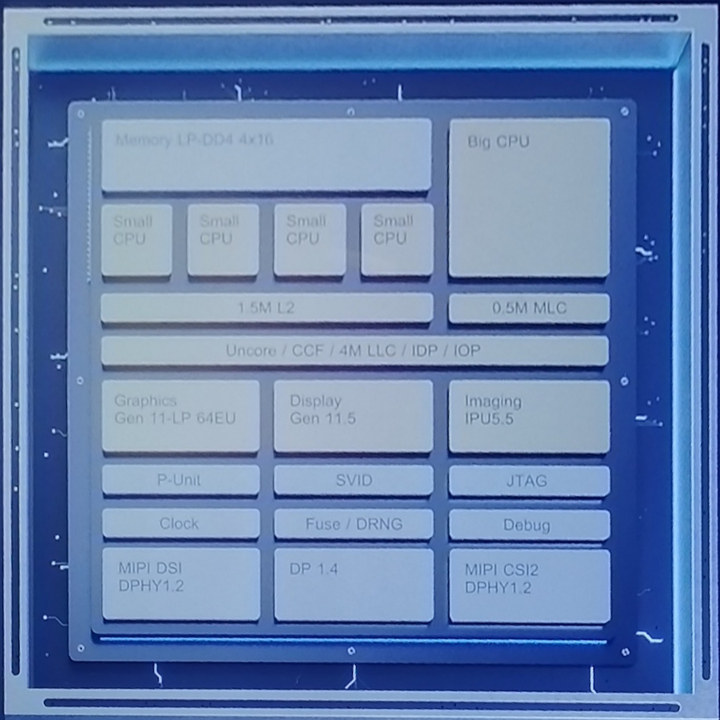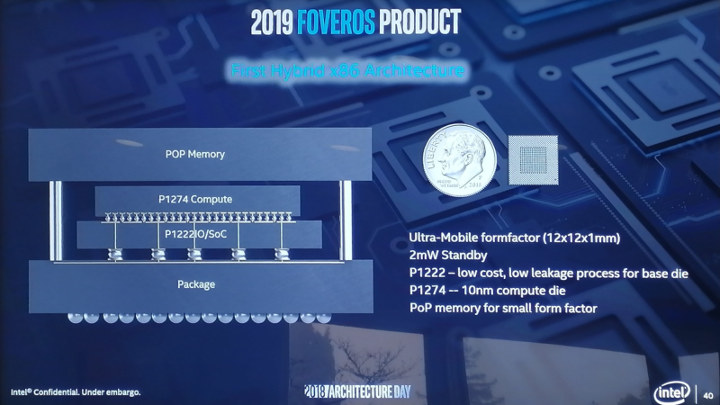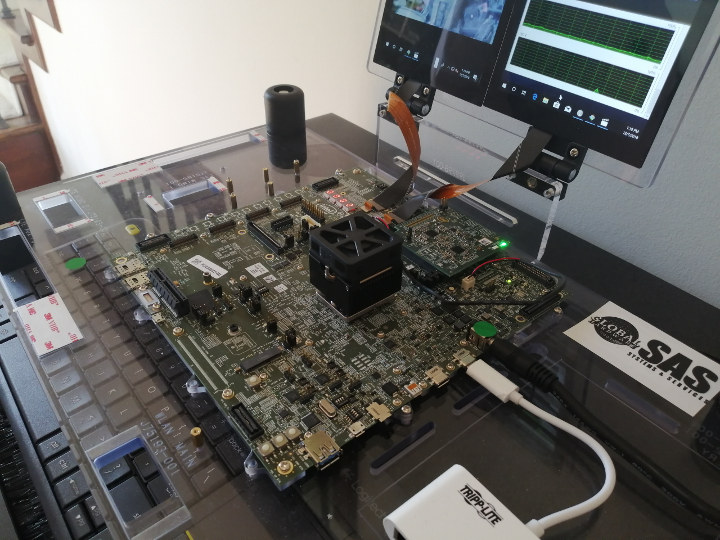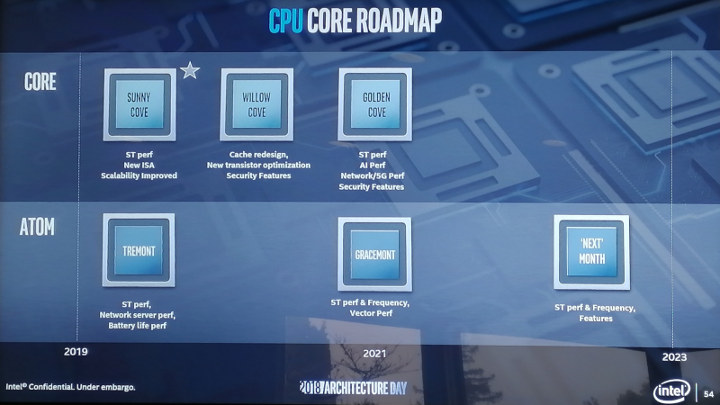Once upon a time Intel manufactured mobile processors for smartphones and tablets, but they eventually gave up as their solutions failed to gain traction. However, it looks like they may be back, as one customers required them to developer a chip with higher performance than Atom processors combined with a 2 mW standby power state.
The chip was developed using “Foveros” 3D stacking technology was showcased at Intel’s Architecture Day 2018, but before going into further details, let’s have a look at Atom and Core processors roadmap to 2023 unveiled at the event.
First, Intel will have developed three new Atom micro-architectures going into 2023. As we’ve seen previously, Tremont will succeed Goldmont Plus microarchitecture found in Gemini Lake and Denverton processors, and improve single-threaded performance, network server performance, and battery life starting in 2019. Around 2021, Gracemont will be launched with again higher single-thread performance and frequency, as well as improvement to vector performance, and two years later (2023), the yet-to-be-named “Next Mont” will bring further single-thread performance and new features.
The top row of the roadmap reveals Intel Core processor roadmap with Sunny Cove, Willow Cove and Golden cove micro-architectures that will be updated year-on-year instead of every two years for the Atom family. What’s interesting here is that Intel has somewhat followed Arm’s big.LITTLE / DynamIQ by combining a “big” Sunny Cove processor with four “small” Atom cores in their Hybrid “Foveros” chip.

The big core comes with 0.5MB of private medium level cache, while the four small Atom (Tremont?) cores share 1.5MB of L2 cache. The chip further adds 4MB of last level cache, a memory controller with support for LPDDR4, 64 EU Gen11 graphics (yes, Intel also unveiled a new GPU capable of handling 4GK/8K), a Gen 11.5 display controller, an IPU 5.5 image engine, MIPI DSI and CSI interfaces, DisplayPort 1.4, and more. Foveros technology enables the integration of all those features into a tiny 12x12mm package with a 7W TDP, and 2mW standby power consumption.

The P1274 compute die combining both Sunny Cove and Atom cores is manufactured using a 10nm process, while the P1222 IO chip is made with 22FFL process specifically designed for low power IoT and mobile products.
Intel did not disclosed the name of the customer, or the exact purpose of the chip, but as Anandtech points out the chip certainly targets mobile devices due to the power budget and tiny package, as well as support for features such as UFS storage and M.2 PCIe SSDs. The development board showcased at the event – and pictured below – also had a few SIM card slots.

The 7W power budget is likely too high for smartphones, so I suspect Intel’s customer may want to compete against Arm laptops (aka always-on always connected mobile PCs) that offer over 20 hours of battery life on a charge. The new chip may be able to offer similar battery life, while delivering much better single thread performance thanks to the Sunny Cove core.
It’s unclear when the new hybrid x86 processor will be found into products, but Intel says it will be available to other OEMs too, and more Foveros Hybrid processors will be launched in 2019 and 2020.
Thanks to TLS for the tip.

Jean-Luc started CNX Software in 2010 as a part-time endeavor, before quitting his job as a software engineering manager, and starting to write daily news, and reviews full time later in 2011.
Support CNX Software! Donate via cryptocurrencies, become a Patron on Patreon, or purchase goods on Amazon or Aliexpress





